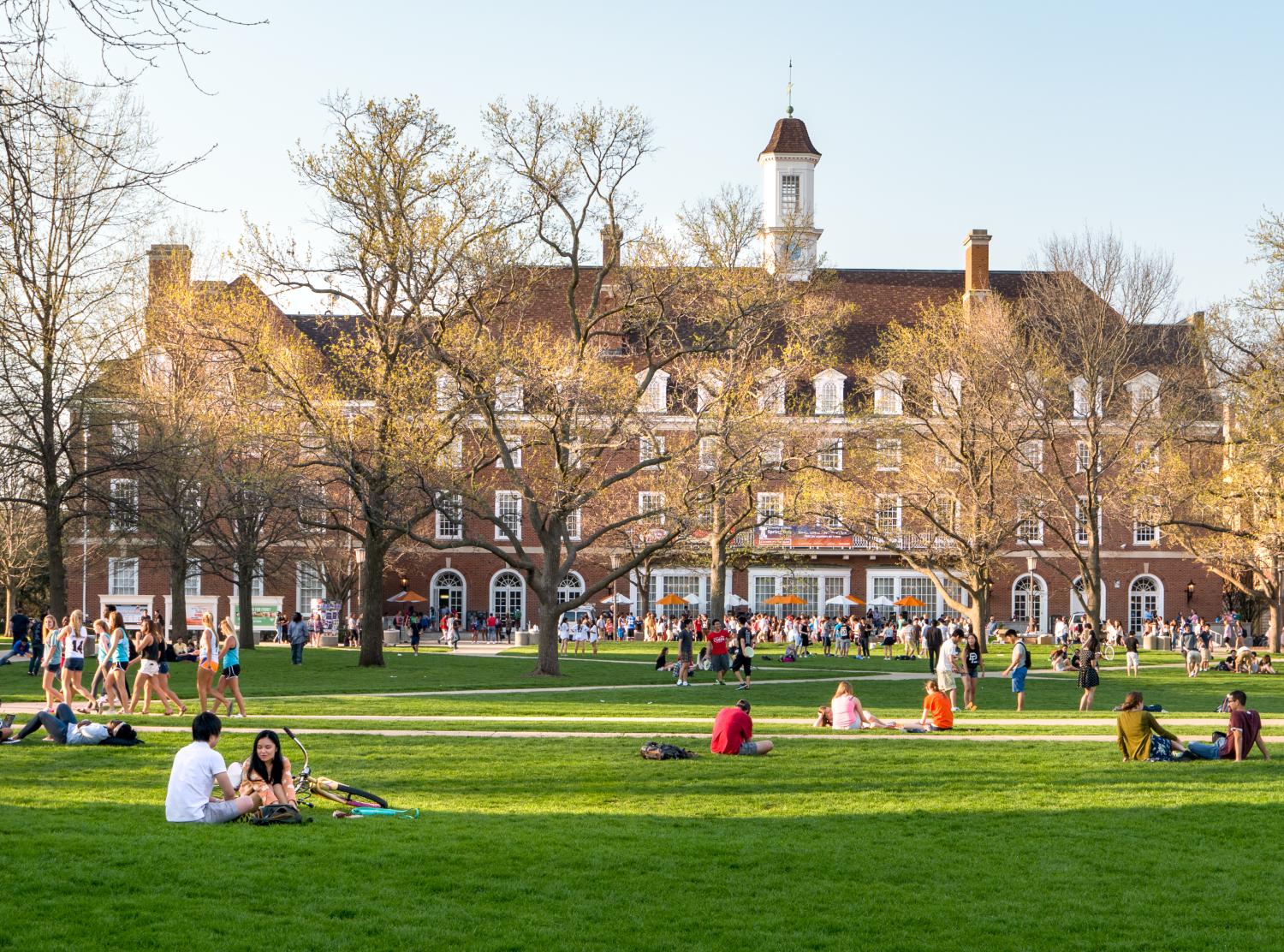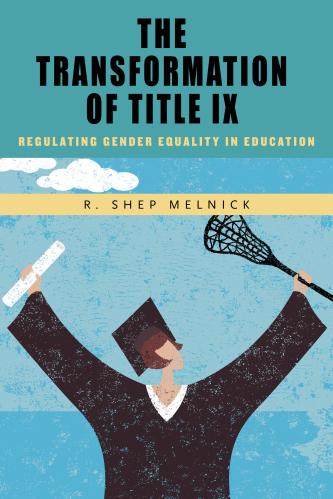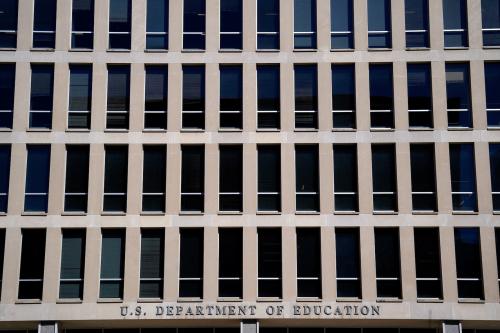This interlude is from Martha Nussbaum’s book, Citadels of Pride: Sexual Abuse, Accountability, and Reconciliation, published by W. W. Norton & Company in May 2021.
So far we have traced the evolution of legal standards for sexual assault and sexual harassment, and their current defects and challenges. There is, however, a significant area of our national discussion that is not fully covered by these discussions, because it involves a complex and uneasy mixture of federal law (Title IX, discussed in Chapter 5) and informal tribunals: sexual assault and harassment on college campuses. Because my previous discussions have covered the most salient issues in each area of law, I need not devote a full chapter to this case, nor do I wish such a disproportionate focus to suggest that women who attend college deserve more attention than women who do not. Unequal access to higher education is already a major problem of justice in our society, compounding other disadvantages based on race and class. There is no reason to perpetuate the injustice by paying more attention to the problems of those women who have managed to arrive at a college or university. One of the great strengths of the traditions I have described is the fact that working-class and minority women (for example Cheryl Araujo, Mechelle Vinson, Mary Carr) have been among their salient plaintiffs.
Yet, because the institutional structures are different, the topic of campus assault requires separate treatment, albeit briefly. Nobody knows exactly how large a problem this is, but one recent survey by the Association of American Universities found that around 20 percent of female undergraduates are victims of sexual assault or sexual misconduct at some point during their college life.1 Other studies have found frequent sexual abuse of males as well, amounting to 6 to 8 percent. Although there are disputes over methodology and definition, there’s no doubt about the severity of the issue. It would appear, however, that attending college does not make a woman more likely to suffer sexual assault.2
Sexual harassment and sexual assault have long included abuses of power between faculty and students, but on the whole, these cases have been understood as workplace abuses of power, and are dealt with under clear public rules, in much the manner of other workplaces. Thus, Chapter 5 has already basically dealt with these cases. In this Interlude I focus on student-student assault and harassment.
The literature on this topic is vast and controversies are heated, in part because the Obama administration guidelines have now been replaced by different guidelines developed by the Department of Education under the aegis of Secretary of Education Betsy DeVos. However, the controversies cross political lines. Thus the group of Harvard Law School professors who protested against the Obama guidelines as unfair to accused men, anticipating the DeVos critique (I’ll describe their intervention as Stage Two below) included some conservatives, but also faculty from the left and even extreme left of the faculty.
I’ll cover the salient issues briefly, without discussing all the ins and outs of all the controversies. Thus the intention of this brief discussion is to indicate, in a general way, how my overall view in this book’s detailed chapters would approach campus cases, rather than to construct a comprehensive argument.3
Alcohol
A large proportion of sexual assaults and alleged sexual assaults occur when one party, or usually both parties, have been drinking heavily. Heavy drinking makes memory gappy and adjudication very difficult. In general campuses need to do much better with alcohol education and treatment. But one recommendation that most college administrators would support is: lower the drinking age. This approach seems counterintuitive, but it is really sensible. Right now, if adults are present where there is under-age drinking (and most students are under twenty-one), they can be charged with contributing to the delinquency of a minor. So they refrain from providing badly needed supervision, including help for students who have passed out. If the drinking age were reduced to eighteen, adults could attend parties and be prepared to give assistance.
Another alcohol-related issue that needs addressing, in both education and adjudication: sex with a person who has passed out or is close to that point is an assault. This is a species of my point about affirmative consent, but it needs to be repeated again and again. The standard, however, is far from clear in application. Many cases before campus tribunals concern the thorny and as yet unresolved question of how impaired a person must be in order not to be capable of decision-making. Since the evidence comes, typically, from two impaired individuals, it is hard for them to remember how impaired they were. Third-party evidence is usually helpful, but is not always available.
Campus Tribunals
There is considerable confusion in the public mind over why campuses do not simply turn accusations over to the police. So it’s important to point out that campuses have membership conditions, usually spelled out in the admissions contract, that go beyond the letter of the law and that need to be enforced by the campus itself. Plagiarism, not attending class, cheating on exams–all of these things are likely to be punished, sometimes with suspension or expulsion, even though they are not crimes. Similarly campuses may adopt sexual requirements that go beyond the law. Some of these are extreme: honor codes at some religious schools penalize all non-marital sexual conduct. I think such restrictions are counterproductive, creating cultures of silence (if a woman discloses that she has been raped, she can be penalized for engaging in sex). But there are also some reasonable requirements, such as affirmative consent, that are not necessarily the law of the land.
Moreover, the criminal justice system takes a long time, and victims need swift justice in order to deal with the trauma and go forward as students.
Finally, if a perpetrator is convicted in the criminal justice system, that record is ruinous for future life and employment. Campus convictions come in degrees, and many involve mandatory counseling and other lesser penalties. For this reason, having the criminal justice system as the only option, would deter reporting and bringing charges, since victims often hesitate before ruining the perpetrator’s life, and yet they seek some measure of recognition. They want the wrong done to them to be acknowledged—both that it happened and that it was wrong—and they want accountability for the perpetrator; but typically they are not seeking maximal revenge. Nor do they want lengthy involvement with the formal criminal justice system.
These are reasons why campus tribunals are not replaceable by the criminal justice system. However, it must also be said that these tribunals often do their job poorly. Faculty and administrators who serve on them are rarely well trained, and they do not always understand the quasi-legal issues with clarity. Procedures are often poorly defined, and the accused, who typically lack legal representation, are at a disadvantage.
Procedural Issues for Tribunals
How, then, can these tribunals be made to work better?
In this section I’ll refer to several key stages in the debate. Stage One was the “Dear Colleague” letter issued by the Obama administration, laying out standards to which all universities must conform to receive federal money.4 Stage Two involved a series of objections to these standards, some issued by Betsy DeVos once she became secretary of education,5 but similar objections were raised earlier by legal professionals—most famously by a group of twenty-eight Harvard Law School professors, drawn from both the left and the right, in a letter published initially in the Boston Globe but widely reprinted.6 Next, in Stage Three, came the new Department of Education draft rule, which, like all administrative rules was subject to “notice and comment,”7 and received over 124,000 comments.8 Finally, in Stage Four (May 2020), the Department of Education issued its Final Rule, which is now legally binding on all colleges and universities that receive federal money.9 I’ll proceed issue by issue.
First, all involved need to get clear about the best burden of proof. This issue has been one of the largest political disputes. Three standards are currently in use in our legal system. The most stringent, used throughout the United States in the criminal justice system, is proof beyond a reasonable doubt. Many countries do not use this standard for criminal trials, but our tradition has judged that convicting an innocent person is more heinous and more to be avoided than letting a guilty person go free. Together with this exacting standard, our criminal justice system gives the accused a constitutional right to the “effective” and cost-free assistance of legal counsel, although great disparities still exist between public defenders provided free of charge and the sort of lawyer that a more affluent defendant typically would engage—not always because of quality, but because public defenders are overworked and usually don’t have enough time to devote to each client. But at least there is cost-free representation. Furthermore, our Constitution’s “confrontation clause” gives accused parties the right to confront witnesses testifying to their guilt. Over time other rights have been inferred from constitutional guarantees, the most famous being the Miranda warnings that must be read to defendants on arrest, warning them of their right to counsel and their right to remain silent. So our system is protective of defendants in multiple ways.
In civil trials, the standard, instead, is “preponderance of the evidence,” which means anything over 50 percent. Obviously this is a much weaker standard. Nor are free lawyers always provided in civil cases (some states do, most don’t). Still, the civil litigation system has firm procedural structures that safeguard the parties—especially a lengthy period of “discovery,” which gives both sides a chance to examine the other side’s evidence. Without such structural safeguards, and without legal counsel assisting the parties, many people feel that the “preponderance” standard is likely to lead to error.
A third intermediate standard is “clear and convincing evidence,” which is used in ways specified by the relevant state laws, often in areas such as paternity and child custody. This standard is typically thought to mean that it is about 75 percent likely that the person did what is alleged.
Before the “Dear Colleague” letter issued by the Obama administration,10 most universities used “clear and convincing evidence” as the standard in sexual assault tribunals. The Obama administration insisted, instead, on the civil “preponderance of the evidence” standard. The Harvard Law School faculty letter, and DeVos in her own remarks, held that this standard was not protective enough of the accused. So far, it seems that nobody favors the “reasonable doubt” standard, which would be very difficult to apply in the informal and evidentially challenged situation of a tribunal. So the choice is between the other two standards, and in the end the Department of Education’s Final Rule gives every college that choice.
It’s important to be clear that a college tribunal will not take away a defendant’s liberty. That dire consequence is our legal system’s primary reason for choosing reasonable doubt. Courts, however, have repeatedly held that educational opportunities are economic or property interests, not matters of freedom. So it seems that there is nothing at all odd about using either the civil justice standard of preponderance, or the tougher standard of clear and convincing evidence. This is where the debate occurs.
In real life, both sides have merit. Preponderance defenders believe, rightly, that in the typical alcohol-fueled interaction any stronger standard will be very difficult to meet. However, it is also true that education, albeit a property interest, is one of special defining importance in our society. So it’s important to be protective of the accused. And the civil standard is probably a bad idea in a setting that lacks the procedural safeguards that are usually present in civil trials. Clear and convincing makes more sense, I believe; but if a school should opt for preponderance—as I said, the Final Rule ultimately, and rather surprisingly, gives institutions a choice between these two—a careful tribunal would probably think in terms of a kind of preponderance plus, not necessarily convicting someone where the evidence suggests a mere 50.5 percent likelihood of guilt. The 50.5 approach would really not be protective enough of the accused. Many preponderance-based tribunals actually interpret the standards somewhat more strongly. Whatever the standard, members of tribunals need better training about the whole issue of evidence and the burden of proof.
A second issue of great importance is the definition of sexual harassment. The campus process typically runs together the two things our legal system has carefully kept apart—namely sexual assault or abuse, and (workplace) sexual harassment. There is no harm in this combination so long as sub-definitions are clearly drawn. Sexual assault is typically defined as a single act, not a pattern of actions: you only need to rape a woman once to be guilty of rape! Sexual harassment, by contrast, has two forms. If there is a quid pro quo, a single act suffices. But in “hostile environment” harassment, the plaintiff needs to show a pattern of actions that are sufficiently “serious” and “pervasive,” as well as “unwelcome.” One demeaning comment or gross overture will not suffice. This distinction seems correct.
In terms of this legal background, the Dear Colleague letter was far from adequate. It defined sexual harassment as “unwelcome conduct of a sexual nature,” including “unwelcome sexual advances, requests for sexual favors, and other verbal, non-verbal, or physical conduct of a sexual nature.” This meant in practice that one gross or demeaning comment, with no prior evidence of its unwelcomeness, would be actionable. The Department of Education’s Final Rule, by contrast (Stage Four), hews closely to legal standards accepted elsewhere in our legal system. There are three categories of sexual harassment: (1) “any instance of quid pro quo harassment by a school’s employee,” (2) “any unwelcome conduct that a reasonable person would find so severe, pervasive, and objectively offensive that it denies a person equal educational access”; and (3) “any instance of sexual assault as defined in the Clery Act [a federal statute dealing with campus security], dating violence, domestic violence, or stalking, as defined in the Violence Against Women Act.” In other words, a single unannounced act can still be sexual assault or a quid pro quo, but verbal harassment must form a pattern that meets the Supreme Court standard of pervasiveness and severity, as determined from the point of view of a reasonable observer. The Final Rule protects someone who makes a deeply offensive remark without advance notice of its unwelcomeness and who does not persist.
On most grounds the Department of Education’s Final Rule is an advance over the Obama administration’s rule, and also over the Department of Education’s first rule (Stage Three), under DeVos, which did not include dating violence, domestic violence, or stalking. The Final Rule is perhaps too narrow in its requirement that the accuser show that the harassment is not just severe, pervasive, and objectively offensive, but that it also has a deleterious effect on the person’s equal educational access. Campuses are academic organizations, but they are also social organizations. Social harassment does not always affect someone’s ability to study, and why should that need to be shown? Why isn’t the poisoning of the person’s campus social life sufficient? There are other issues that have been raised, but on balance the “notice and comment” process seems to have worked pretty well.
I shall not go into the details of the various discussions of the questioning and confrontation process in the old and new rules. What I want to focus on, instead, is what I consider to be one of the largest problems with campus tribunals, which has not been addressed by any of these rules: the lack of access to free legal counsel for the accused. Most institutions not only do not provide a lawyer for the accused party; they actively discourage the hiring of lawyers. Typically the accused is permitted to have one supporter or advisor, but when the accused asks if this person can be a lawyer, they are usually discouraged. This is wrong. “Advisors” are typically faculty or administrators who have no legal training and who cannot do an energetic job of defending their client’s rights. And it is also wrong to require people to hire their own lawyers. Free legal assistance would go a long way to dispelling the worries of the twenty-eight Harvard Law School faculty members (Stage Two) about the system’s unfairness. Columbia University does provide free legal counsel for the accused, and so, now, does Harvard Law School (though not the rest of Harvard). My own university has recently begun to implement a policy offering free legal counsel to both defendants and plaintiffs. I have not been able to find out how many other institutions do this. And some federal grant money is available to support accused students at state universities. But the linchpin of our justice system is legal representation. Perhaps this requirement could be waived for minor offenses for which the likely penalty is alcohol counseling, for example; but in cases where the accused faces expulsion it should be mandatory, no matter what it costs. Colleges and universities have many doctors, nurses, and psychologists on their payrolls. And they do have a staff of lawyers, only not for this purpose. They should enlarge their legal departments to include lawyers at the service of students, for just this sort of problem.
I’ve said that tribunals are often poorly trained. The best solution to this problem, since membership of tribunals rotates, is mandatory sexual assault and sexual harassment training for all faculty and administrators. Such training is now required in most universities, as it is in most businesses. At the University of Chicago, each administrator and faculty member must complete the course online every year. It is not perfect, but it does supply a uniform level of awareness.
The Title IX Process
A welcome element of experienced professionalism is now supplied by the presence of Title IX offices on campuses. Typically they do face-to-face training as well as online training, though not as often. But they also play a crucial role through a strong norm of mandatory reporting, which is helping to close the information gap. If a student discloses sexual harassment or assault to any faculty member or administrator, that person is required immediately to inform the Title IX coordinator, giving the complainant’s name. The coordinator will then contact the complainant, typically promising her complete confidentiality and anonymity if she requests it. The complainant usually also has decisional autonomy: nothing will be done, and the alleged perpetrator will not be contacted, unless the complainant gives a go-ahead. Meanwhile the coordinator can advise the complainant about how the process works.
Mandatory reporting is controversial. Many have feared that it will discourage disclosures: the minute you open up to someone you trust, the information also goes to someone else you don’t know. But on the whole mandatory reporting seems wise. The Title IX staff, in my experience, behave with restraint and professionalism, protecting confidentiality. Once faculty and administrators have experience with the coordinators, my experience is that they do come to trust them. And faculty (and others) are relieved of a huge burden of dealing with the whole of a traumatized person’s subsequent life and choices. Faculty usually are not equipped to shoulder this burden, however well-intentioned they are.
The letter by the twenty-eight Harvard Law School professors objected to too much centralized power being vested in the Title IX office, in the scheme at first proposed by Harvard Law School in its attempt to institutionalize the Obama administration standards. The main problem they identified was that the Title IX office did both investigation and adjudication. Their letter was surely correct to say that this setup is very unfair and unwise. Harvard Law School quickly heeded their criticism, separating the two functions. The primary function of the Title IX office should be—and by now for the most part is—investigative and advisory. The tribunals themselves typically consist of faculty, and sometimes administrators, and are constituted according to procedures subject to faculty autonomy and faculty governance. They have many defects, but they are not an alien bureaucracy invading the campus, as the Harvard letter had feared.
We now need to address the gaps in the process that remain, particularly in the area of legal representation.
We have all learned a great deal from these somewhat painful debates. And progress has been made. Although in some ways DeVos has been a polarizing figure, the Final Rule adopted by the Department of Education under her aegis, thanks to the notice-and-comment process, is debatable but still arguably fair. It seems distinctly superior both to the draft rule and to the standards articulated by the Obama administration. We now need to address the gaps in the process that remain, particularly in the area of legal representation.
-
Footnotes
- Nick Anderson, Susan Svrluga, and Scott Clement, “Survey: More than 1 in 5 Female Undergrads at Top Schools Suffer Sexual Attacks,” Washington Post, September 21, 2015, https://www.washingtonpost.com/local/education/survey-more-than-1-in-5-female-undergrads-at-top-schools-suffer-sexual-attacks/2015/09/19/c6c80be2-5e29-11e5-b38e-06883aacba64_story.html.
- Charlene L. Muehlenhard et al., “Evaluating the One-in-Five Statistic: Women’s Risk of Sexual Assault While in College,” Journal of Sex Research 54, no. 4 (May 16, 2017): 565, https://doi.org/10.1080/00224499.2017.1295014. As discussed there, evidence does not support the assumption that college students experience more sexual assault than nonstudents.
- In this area, my two research assistants did such superb and meticulous work on this topic, which naturally interested them greatly, that their work is worthy of note in itself and is on file with me: Sarah Hough, “Legal Approaches toward On-Campus Sexual Violence in the US: A Brief Overview,” unpublished paper, July 1, 2019; and Jared I. Mayer, “Memo on De Vos’s Changes to Campus Title IX Proceedings,” unpublished paper, May 20, 2020.
- National Sexual Violence Resource Center, “Dear Colleague Letter: Sexual Violence” (US Department of Education, Office of Civil Rights, 2011), https://www.nsvrc.org/publications/dear-colleague-letter-sexual-violence. The NSVRC website also contains much helpful background information.
- See “Department of Education Issues New Interim Guidance on Campus Sexual Misconduct,” US Department of Education, September 22, 2017, https://www.ed.gov/news/press-releases/department-education-issues-new-interim-guidance-campus-sexual-misconduct.
- “Rethink Harvard’s Sexual Harassment Policy” (Opinion), Boston Globe, October 14, 2014, https://www.bostonglobe.com/opinion/2014/10/14/rethink-harvard-sexual-harassment-policy/HFDDiZN7nU2UwuUuWMnqbM/story.html.
- For an overview of the notice-and-comment system of regulation making, see “A Guide to the Rulemaking Process,” Office of the Federal Register, January 2011, https://www.federalregister.gov/uploads/2011/01/the_rulemaking_process.pdf.
- “Nondiscrimination on the Basis of Sex in Education Programs or Activities Receiving Federal Financial Assistance,” Federal Register, November 29, 2018, https://www.federalregister.gov/documents/2018/11/29/2018-25314/nondiscrimination-on-the-basis-of-sex-in-education-programs-or-activities-receiving-federal.
- See 20 U.S.C. § 1681(a) (2018). A helpful memo clarifying the content of the Final Rule is Apalla U. Chopra et al., “Analysis of Key Provisions of the Department of Education’s New Title IX Regulations,” O’Melveny & Myers LLP, May 15, 2020, https://www.omm.com/resources/alerts-and-publications/alerts/analysis-of-key-provisions-of-doe.
- National Sexual Violence Resource Center, “Dear Colleague Letter.”
The Brookings Institution is committed to quality, independence, and impact.
We are supported by a diverse array of funders. In line with our values and policies, each Brookings publication represents the sole views of its author(s).







